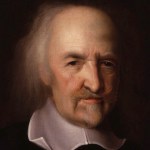Cross-Over Leviathans
Thanks for tracking down the debut post from The Loaded Tangent – part-blog, part-immersion in a roiling ferment of ideas fueled as much by culture and the arts as by science and technology. Connections will be forged, disciplines crossed, fields switched, minds expanded, and fresh discoveries made.
Here, the geek and the fop, the techie and the poet, the code-writer and the novelist, the rocket-scientist and the artist are on an equal footing. Men and women of letters will trade inspiration with number-crunchers, as each freely explores the others’ territory and, hopefully, somewhere down the line, thoughts new and brilliant will materialize like so many cosmic flashes. Then we can all celebrate with wine, song and fierce conversation, and the great timeless feedback loop of inspiration will keep on doing its thing.
First up, a motley crew of exceptional talents, united not only by a greater-than-average degree of genius, but also by an irresistible impulse to switch fields: to swerve off from their main area of specialism at an unexpected, hugely rewarding tangent. Post-Elizabethan philosopher Thomas Hobbes (1588-1679) – pictured top left – made his big switch relatively late in life, inspired by Euclid’s Elements of Geometry to apply the methods of science to politics and society. As Philip Ball notes in his excellent book Critical Mass: How One Thing Leads to Another:
“It was not until 1629 that the forty-year-old Hobbes, a committed classicist, had his eyes opened to the power of scientific and mathematical reasoning.”
The result was Leviathan, published in 1651, for which Hobbes handsomely deserves his status as cross-disciplinary hero and pioneer.
Hedy Lamarr (top middle) supplemented her Hollywood day-job with a sideline in wireless electronics, as co-inventor (with like-minded polymath George Antheil) of a frequency-hopping technology for torpedoes; Babe Ruth (top right) started out as a pitcher before immortalizing himself as The Sultan of Swat (there’s a great piece on the science of the Babe here); actress Ida Lupino (bottom left) broke more than one mould when she made her move behind the camera, and became the first woman to direct a film noir, The Hitch-Hiker (1953); and biomedical gerontologist Aubrey de Grey (bottom right) followed the field-switching example set by the likes of physicist-turned-molecular biologist Francis Crick (bottom middle) when he moved his focus from artificial intelligence to aging.
Every one of these game-changers nutmegged predictability, and sold expectation a glorious dummy, by daring to strike out in a new direction. (In the case of Babe Ruth, maybe “head off” works better than “strike out”). Their willingness to traverse boundaries, coupled with a talent for redirecting and re-sharpening their focus, makes them honorary cross-over leviathans. Expect more of their ilk from The Loaded Tangent, as the voyage into cross-disciplinary idea-space continues . . .






